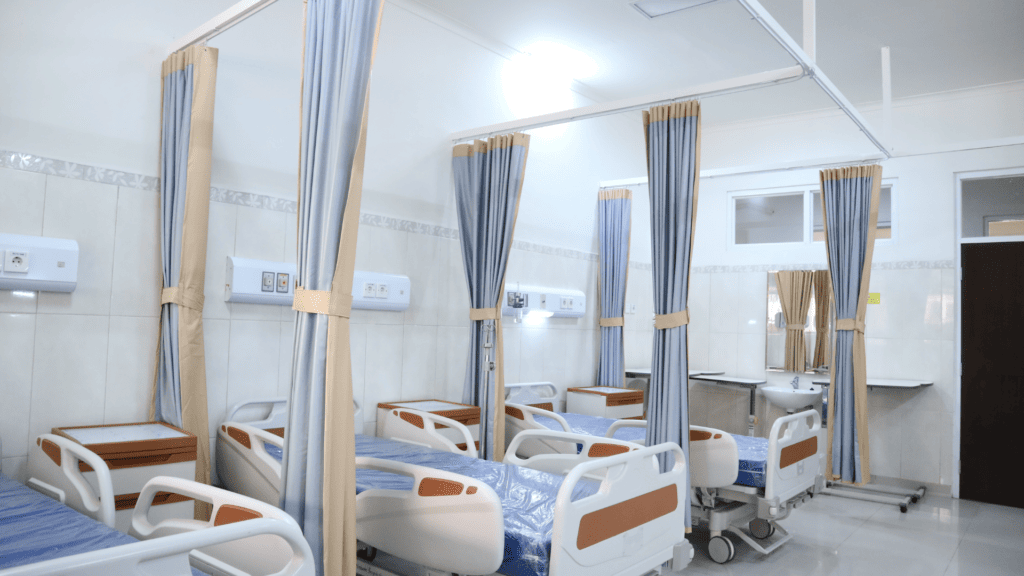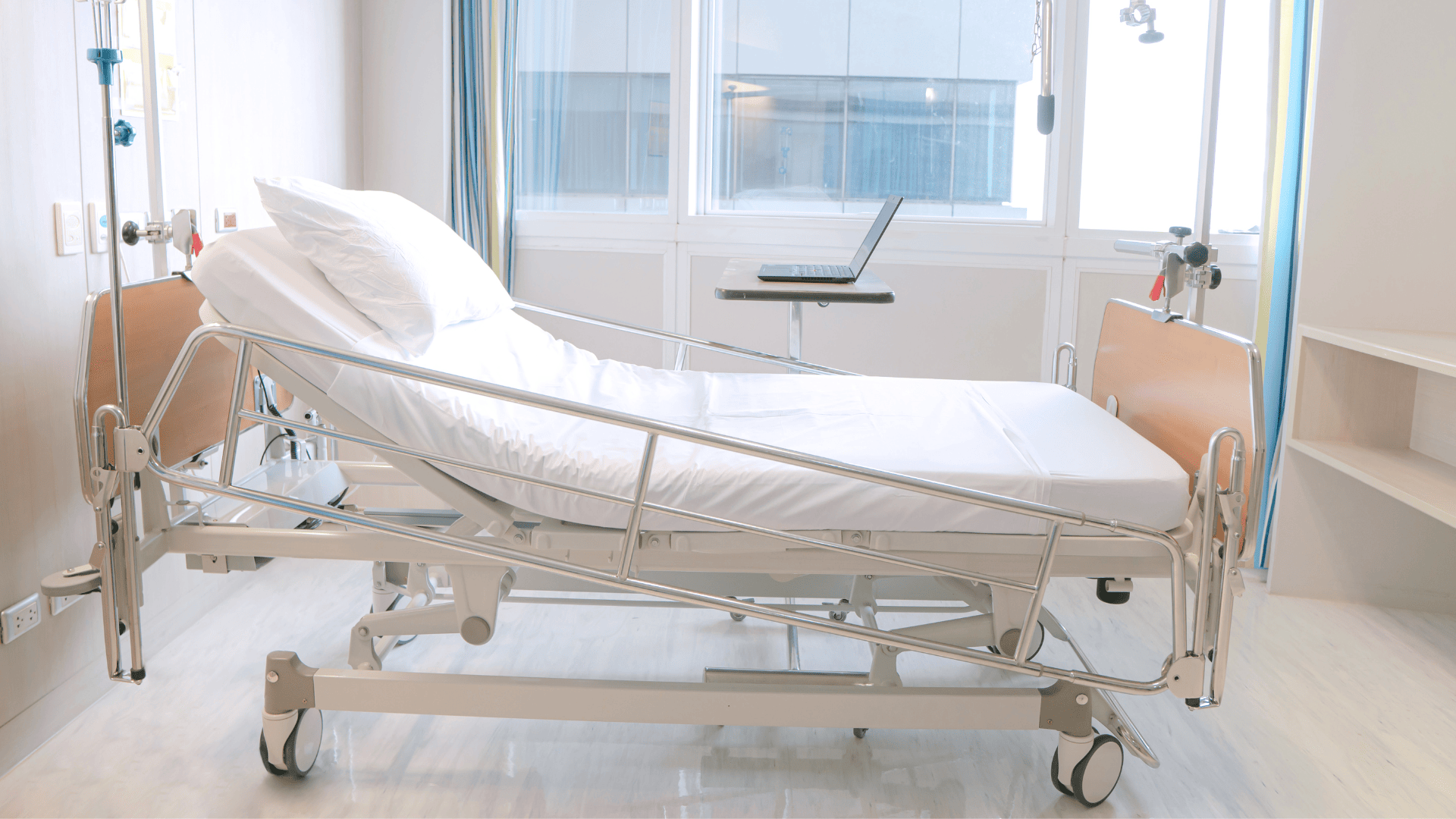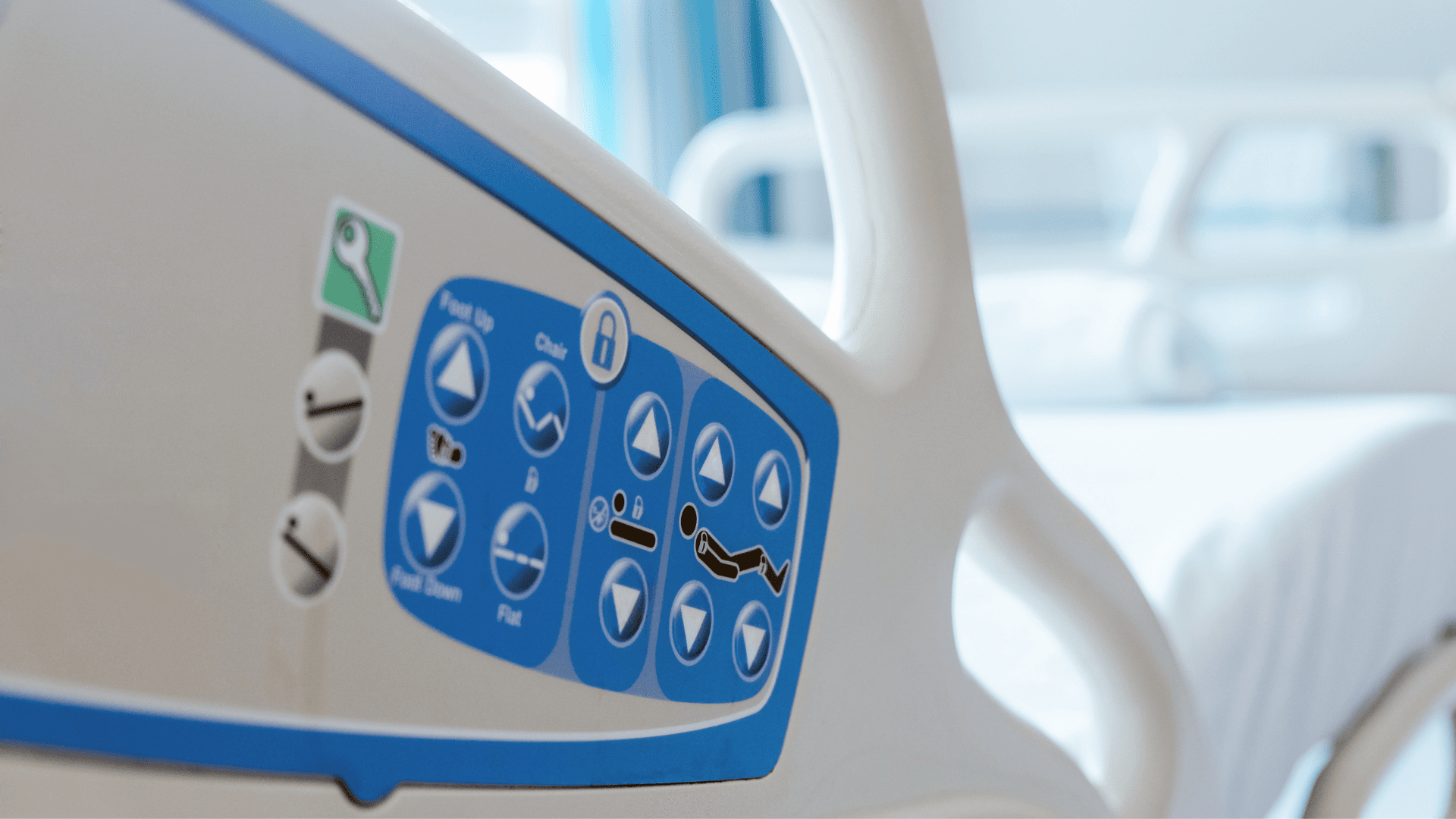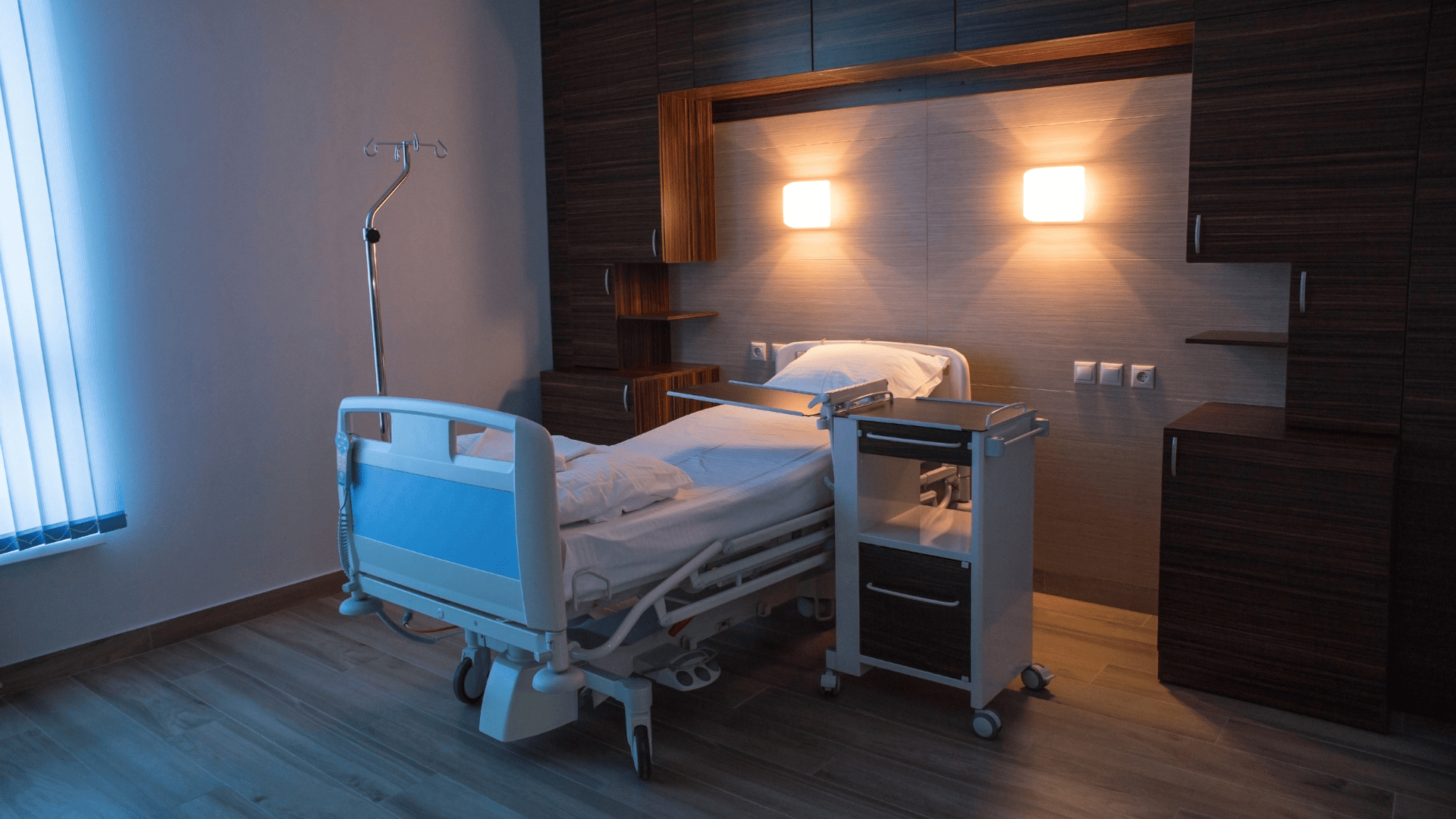Medical beds are an essential component in meeting the demands of patients of varied conditions. Different types of medical beds have developed to meet the needs of patients in various care environments. This guide will explore into the many varieties of medical beds, such as those with adjustable bases, those used in hospitals, and those used in the home. There is a specific function for each bed that helps patients get well quickly and easily.
The effectiveness of a medical bed can be demonstrated by its ability to contribute to an individualised care plan and an improvement in the patient's and their family's quality of life. The right medical bed can help improve the quality of life for people suffering from a wide variety of conditions, such as paralysis or quadriplegia from a spinal cord injury, pressure ulcers (bedsores), or respiratory problems like pneumonia or chronic obstructive pulmonary disease.
In this article, we'll discuss the usefulness and advantages of a wide variety of medical beds.
What are Medical Beds?
Every patient can benefit from having a healthcare facility or bed available. This is especially true for individuals who struggle with getting in and out of bed, have trouble moving around, or have a medical condition that makes it hard for them to find a comfortable position. The size of the bed is an important thing to think about if you want to put one in your house.
Patients can choose from a number of different hospital bed layouts when shopping around. It's important to learn the dimensions of the bed frames and mattresses before making a final decision. The patient's health, safety, and comfort can all benefit greatly from an increase in hospital bed size. Even though most people can use a standard size, some people need something bigger.
How Do Medical Beds Work?
The bed deck and frame of a medical bed. A bed's frame is an essential component for safety and comfort. The mattress is held in place by the bed deck. The head section of a medical bed can be raised separately from the foot section and the foot section from the rest of the bed.Management and improvement from heart surgery or respiratory ailments may advantage from a split in the knee area that lets them sit in the cardiac chair position or raise their knees above their hips and feet.
Types of Medical Beds
Manual, semi-electric, and fully-electric hospital beds are the three most common. Nonetheless, a wider variety of hospital beds is available.
Manual
The head and foot of these beds can be raised and lowered by trying to turn a hand crank. Because the patient or caretaker has to be physically able to turn the crank, this type of bed makes it harder for the patient to be independent and comfortable.
Semi-Electric Beds
Due to the lack of full electric operation, some fine-tuning will be required by hand. They don't skimp on features, though, as a hand pendant is included to operate the bed's head and knee lifts. These beds are among the least expensive available, but they may not be suitable for those who lack the strength to manually raise and lower the bed. The head and foot of the bed are independently controlled by electric motors. The patient or caretaker must physically turn a hand crank to raise or lower the bed.
Fully Electric Beds
Electric beds are more expensive than semi-electric beds, but they are worth considering if you have trouble using the manual features. The bed's head and knee sections, as well as the bed's height, can all be adjusted with the hand pendant. Patients who want the freedom to get in and out of bed on their own will benefit greatly from the design of fully electric adjustable beds.
The patient can change the height and position of the bed by using a remote. Without the need for a hand crank, the bed can be brought up to a comfortable height so the caretaker can reach the patient or change the bedding without bending over.Trendelenburg (tilt) and possibly other positions may be possible in some models.
Hi-Low Beds
Hi-Low beds are the right choice for those who need extra safety features. Automatically raising and lowering to accommodate the user's height and weight, these beds help those with balance issues get in and out of bed with ease.
These beds can be lowered to make it simpler to transfer from a wheelchair, and they can be raised to bring blood flow to ailing areas. These hospital beds are electric and feature simple controls like those found on many modern hospital beds.
Bariatric Beds
Those who need a particularly sturdy bed due in part to their own weight will benefit from a bariatric bed. People weighing more than 350 pounds can benefit from using them because they can support loads of up to 1000 pounds. In comparison to semi-electric beds, there are many benefits to having a bed that is fully electric.
Features To Consider
Adjustable side rails/assists
Transferring a patient is made easier and their safety is increased by side rails/assist. Some of them can rotate 90 degrees and move up and down. Only when getting in or out of bed should the rails be lowered. The full rail is less common than the half rail. Because of the risk of entrapment, full rails are prohibited in some types of housing, such as retirement communities. Some manufacturers also provide 1/4 and 3/4 rails.
Controls
Hand controls on the bed can be used by both the caretaker and the patient to control the bed and any nearby digital equipment. Some of the more expensive models have controls on the footboard that a caretaker can use instead of the user's hands.
Mattresses
The mattresses used in hospital beds are another defining characteristic. The innerspring mattress, which features coils for added support and comfort, is by far the most popular option for sleepers. Patients who need a firm surface to sleep on should consider purchasing an innerspring mattress.
Memory foam mattresses have a growing market in hospitals. Memory foam mattresses conform to the shape of the sleeper, providing both support and comfort. An excellent choice for patients who need a gentle night's sleep is a memory foam mattress.
Bed Frames
The frames of hospital beds are another defining characteristic. The standard hospital bed is the Hospital Bed with Rails, which consists of a metal frame and side rails to assist patients with getting in and out of bed. Rails on hospital beds are a helpful safety feature for patients who need help getting in and out of bed, and who also need to be prevented from falling out of bed.
Patients can eat and do work while lying in bed, as bed frames with an overbed table are also available.
Wheels or Casters
The legs of the bed may have wheels or casters attached to them for portability. Safer and more convenient transfers can be made if the wheels are locked in place. The only time you should unlock them is when you're physically relocating the bed.
Sleep Surface
Although 36" x 80" is the standard size for hospital beds, some models offer optional extensions or even larger sizes. Some beds have a medicinal grid surface that lets more air flow and makes sleeping even more comfortable.
Head and Foot Boards
Both the head and the foot board are built to last and can be easily wiped down. Wood can be found in a wide variety of finishes and hues from various manufacturers.
Safety Features
In this context, it is important to investigate the various forms of protection offered by different beds, such as the presence of drop-down rails and additional side rails. When shopping for a bed, it's a good idea to ask about safety features like pull-down steps and other accessories.
Benefits of Choosing The Hospital Bed Mattress Sizes And Dimensions
There are many reasons why hospital beds and mattresses are so important to a patient's health and well-being. The patient's quality of life is directly related to the dimensions and size of their hospital bed. Patients and their families benefit from greater scalability so that they can manage a wider range of health and wellness issues at home.
Hospital beds have special mattresses designed to evenly disperse weight across the body. Patients who are underweight or have less fat and muscle between them and their mattresses are particularly susceptible to bedsores, so this is an important factor to keep in mind.
How Do You Choose The Bed Size You Need?
Considering the patient is the first step in determining the appropriate bed size. The patient's body mass index (BMI) must be taken into account first when deciding which dimension to use. A standard width mattress of 36 inches is required for a patient with a body mass index of 45 or less to fit into the bed easily and comfortably. They need a bed that is 39 inches wide to be comfortable. The bed frame and mattress can be easily extended for users of greater height.
The necessity of the bed is due to a combination of factors. Does the patient have a condition that necessitates a longer or wider hospital bed than what is typically provided? Can they get bedsores easily? An appropriately sized hospital bed can facilitate conditions and prevent complicating situations, which can lengthen and complicate recoveries.
Why Having Different Kinds Of Hospital Beds Is A Good Thing?
Hospital beds are made with the comfort of the patient in mind and are very different from regular beds. Even though not everyone who could use a care bed has the same comfort needs, the bed can be changed to meet different preferences.
When compared to fixed-height beds, hospital beds that let you change the height of the head and foot are much better.
Patients who are awake in bed may benefit from having their head, feet, and knees raised for therapeutic and comfort purposes. When they're sleeping, many patients need a flat, level surface. When they're awake, though, they can recline in a chair and do things like read or watch TV. It's normal for different brands and models to have different ways to change your posture.
There are many different kinds of hospital beds, and each one has its own features and price. Most hospital beds can help with pain and discomfort to some degree, but the cheapest beds can have problems with their safety, design, and technology.
Conclusion
Medical beds are crucial for patients with various conditions, such as paralysis, quadriplegia, pressure ulcers, or respiratory problems. They are essential for providing a healthcare facility or bed, especially for those who struggle with getting in and out of bed, have trouble moving around, or have a medical condition that makes it difficult for them to find a comfortable position. The size of a hospital bed is an important factor to consider, as it can greatly improve the patient's health, safety, and comfort.
Medical beds work by having a bed deck and frame, which is essential for safety and comfort. The mattress is held in place by the bed deck, and the head section can be raised separately from the foot section and the foot section from the rest of the bed. Management and improvement from heart surgery or respiratory ailments may benefit from a split in the knee area that lets them sit in the cardiac chair position or raise their knees above their hips and feet.
There are three main types of medical beds: manual, semi-electric, and fully-electric hospital beds. Manual beds can be raised and lowered by turning a hand crank, while semi-electric beds require fine-tuning by hand. Fully electric beds are more expensive than semi-electric beds but are worth considering if you have trouble using the manual features.
Hi-Low beds are the right choice for those with extra safety features, automatically raising and lowering to accommodate the user's height and weight. They can be lowered to make it easier to transfer from a wheelchair and raised to bring blood flow to ailing areas. They are electric and feature simple controls like those found on many modern hospital beds.
Bariatric beds are suitable for those weighing more than 350 pounds, as they can support loads of up to 1000 pounds. They offer many benefits compared to semi-electric beds.
Features to consider include adjustable side rails/assists, hand controls on the bed, and mattresses with coils for added support and comfort. The most popular option for sleepers is the innerspring mattress, which features coils for added support and comfort. Memory foam mattresses are gaining popularity in hospitals, providing support and comfort for patients who need a gentle night's sleep. Bed frames, such as the standard Hospital Bed with Rails, are essential for safety and ease of access. Overbed tables and wheels or casters are also available for easy mobility.
Sleep surfaces, such as 36" x 80" and medicinal grid surfaces, are available in various sizes and finishes. Safety features, such as drop-down rails and additional side rails, are also important to consider.
Choosing the right hospital bed size depends on the patient's BMI, which should be considered when determining the appropriate size. A standard width mattress of 36 inches is required for patients with a BMI of 45 or less, while a 39" width bed is recommended for those of greater height.
The bed size is determined by factors such as the patient's condition and the risk of bedsores. An appropriately sized bed can facilitate conditions and prevent complications, reducing recoveries.
Hospital beds are designed with the comfort of the patient in mind, and they can be adjusted to meet different preferences. Fixed-height beds are better for patients who need to change their head and foot height. Patients who are awake in bed may benefit from raised head, feet, and knees for therapeutic and comfort purposes.
There are various types of hospital beds, each with its own features and price. While most beds can help with pain and discomfort, the cheapest ones may have issues with safety, design, and technology.
Content Summary:
- Medical beds are an essential component in meeting the demands of patients of varied conditions.
- Different types of medical beds have developed to meet the needs of patients in various care environments.
- This guide will delve into the many varieties of medical beds, such as those with adjustable bases, those used in hospitals, and those used in the home.
- There is a specific function for each bed that helps patients get well quickly and easily.
- The effectiveness of a medical bed can be demonstrated by its ability to contribute to an individualised care plan and an improvement in the patient's and their family's quality of life.
- The right medical bed can help improve the quality of life for people suffering from a wide variety of conditions, such as paralysis or quadriplegia from a spinal cord injury, pressure ulcers (bedsores), or respiratory problems like pneumonia or chronic obstructive pulmonary disease.
- In this article, we'll discuss the usefulness and advantages of a wide variety of medical beds.
- The size of the bed is an important thing to think about if you want to put one in your house.
- The patient's health, safety, and comfort can all benefit greatly from an increase in hospital bed size.
- The bed deck and frame of a medical bed.
- Manual, semi-electric, and fully-electric hospital beds are the three most common.
- Nonetheless, a wider variety of hospital beds is available.
- The head and foot of these beds can be raised and lowered by trying to turn a hand crank.
- The head and foot of the bed are independently controlled by electric motors.
- Electric beds are more expensive than semi-electric beds, but they are worth considering if you have trouble using the manual features.
- Patients who want the freedom to get in and out of bed on their own will benefit greatly from the design of fully electric adjustable beds.
- The patient can change the height and position of the bed by using a remote.
- Hi-Low beds are the right choice for those who need extra safety features.
- These hospital beds are electric and feature simple controls like those found on many modern hospital beds.
- Those who need a particularly sturdy bed due in part to their own weight will benefit from a bariatric bed.
- In comparison to semi-electric beds, there are many benefits to having a bed that is fully electric.
- Transferring a patient is made easier and their safety is increased by side rails/assist.
- Only when getting in or out of bed should the rails be lowered.
- Hand controls on the bed can be used by both the caretaker and the patient to control the bed and any nearby digital equipment.
- The mattresses used in hospital beds are another defining characteristic.
- Patients who need a firm surface to sleep on should consider purchasing an innerspring mattress.
- Memory foam mattresses have a growing market in hospitals.
- An excellent choice for patients who need a gentle night's sleep is a memory foam mattress.
- The standard hospital bed is the Hospital Bed with Rails, which consists of a metal frame and side rails to assist patients with getting in and out of bed.
- When shopping for a bed, it's a good idea to ask about safety features like pull-down steps and other accessories.
- There are many reasons why hospital beds and mattresses are so important to a patient's health and well-being.
- The patient's quality of life is directly related to the dimensions and size of their hospital bed.
- Considering the patient is the first step in determining the appropriate bed size.
- The necessity of the bed is due to a combination of factors.
- Hospital beds are made with the comfort of the patient in mind and are very different from regular beds.
- When compared to fixed-height beds, hospital beds that let you change the height of the head and foot are much better.
- It's normal for different brands and models to have different ways to change your posture.
- There are many different kinds of hospital beds, and each one has its own features and price.
FAQs About Types of Medical Beds
The different types of medical beds available in the market include adjustable care beds, hospital beds, aged care beds, bariatric beds, and homecare beds.
Adjustable care beds prioritize personalized comfort with adjustable features, while hospital beds are designed for medical facilities with features like height adjustability and side rails. Adjustable care beds are more suitable for homecare use due to their focus on individual comfort.
.
Key features of aged care beds include low-height design for easier access, fall prevention systems, and user-friendly controls to cater to the specific needs of elderly individuals.
Bariatric beds are reinforced and designed to support higher weight capacities, typically ranging from 600 to 1000 pounds or more, whereas standard medical beds have lower weight capacities.
Homecare beds offer personalized comfort, mobility, and safety features, allowing patients to receive care in the comfort of their home and maintain independence with reduced hospital visits.



